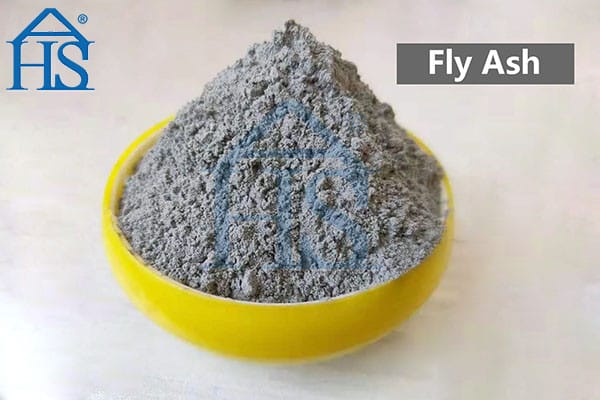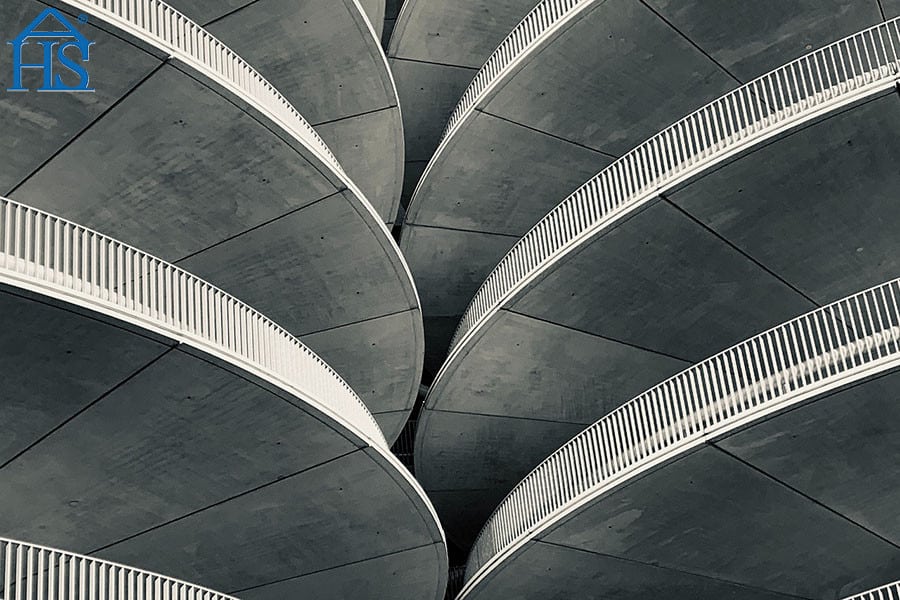Silica Fume
Silica fume contains a large number of non-crystalline spherical particles of SiO2 with extremely fine particles and strong activity, which are mixed into cement concrete, and its enhancing effects are manifested in:
- Uniform distribution in the hydration products, with good micro-filling effect, densifying the concrete.
- Being particularly beneficial to the strength development of concrete in the early and middle stages.
- causing a reduction of free Ca(OH)2 in the concrete, a reduction in the size of the original lamellar crystals and an increase in the dispersion in the concrete.
- causing a significant improvement in the interfacial structure in concrete.
These properties lead to a significant increase in the strength and durability of concrete.Silica fume used in C80 high-strength high-performance concrete should meet the following quality indicators.
- The active amorphous silica content of not less than 90%.
- The specific surface area (BEF-N2 adsorption method) is not less than 20.0 m2/g.
- The density of about 300~350kg/m3, 550~650kg/m3, Above 700kg/m3;
- The average particle size of 0.1mm ~ 0.2mm.
Fly Ash
High-quality fly ash contains a large number of highly active SiO2 and Al2O3, which can be mixed into concrete mixes with cement hydration products Ca(OH)2 for secondary reaction to produce stable hydrated calcium silicate gel, which has an obvious enhancing effect.
High-quality fly ash contains more than 70% of spherical glass body, these glass body surface is smooth, no angular, stable performance, in the concrete to play a lubricating role, reducing the frictional resistance between the concrete mix, can significantly improve the compatibility of the concrete mix, improve the pumpability of the concrete mix.
In addition, the addition of high-quality fly ash in concrete can also reduce the heat of hydration, reduce the drying shrinkage of concrete, effectively improve the permeability of concrete, frost resistance, modulus of elasticity, etc., but also to improve the corrosion resistance of concrete sulfate, inhibit the expansion of alkali-silica reaction. Formulation of C80 high-strength high-performance concrete should be used I-class fly ash, and the total content of SiO2 and Al2O3 more than 70%.
Difference between silica fume and fly ash in concrete
- The amount of admixture is different: the amount of silica fume is generally between 5% and 10%, and the amount of fly ash is generally more, between 10 and 40%.
- For different grades of concrete: silica fume is more expensive, the activity is far more than the activity of fly ash, so silica fume is generally used in high-strength concrete above C60, used to enhance the strength of the interface between cement stone and aggregate in concrete. And the activity of fly ash is lower, generally used in low and medium grade concrete.
- The impact on the working properties of concrete is different: silica fume due to its large specific surface area, when mixed in larger amounts will increase the amount of water used in concrete, so that the concrete becomes very sticky. But fly ash, especially when its water demand ratio is less than 100%, mixed into the concrete will improve the workability of concrete and reduce water consumption.
FAQ
Q: What is the difference between fly ash and silica fume?
A: Fly ash and silica fume are both byproducts of burning materials, but they have different chemical compositions. Fly ash is composed of primarily silica, alumina, and iron, while silica fume is made up of very fine particles of silicon dioxide. This difference in composition can affect their performance and applications in construction.
Q: Which is better for concrete: fly ash or silica fume?
A: Both fly ash and silica fume can improve the strength and durability of concrete, but they have different properties that make them suitable for different applications. Fly ash is often used as a partial replacement for cement in concrete, while silica fume is typically used as a pozzolanic admixture to improve the strength and durability of the concrete. The choice between fly ash and silica fume depends on the specific needs of the construction project.
Q: Which is more expensive: fly ash or silica fume?
A: Silica fume is generally more expensive than fly ash due to the higher cost of production and the more limited availability. However, the cost difference may vary depending on location and availability.
Q: Which has a smaller particle size: fly ash or silica fume?
A: Silica fume has a smaller particle size than fly ash. Silica fume particles are typically less than 1 micron in diameter, while fly ash particles can range from 1 to 100 microns in diameter.
Q: Which is more effective at reducing permeability: fly ash or silica fume?
A: Both fly ash and silica fume can reduce the permeability of concrete, but silica fume is generally more effective due to its smaller particle size and high pozzolanic reactivity.






